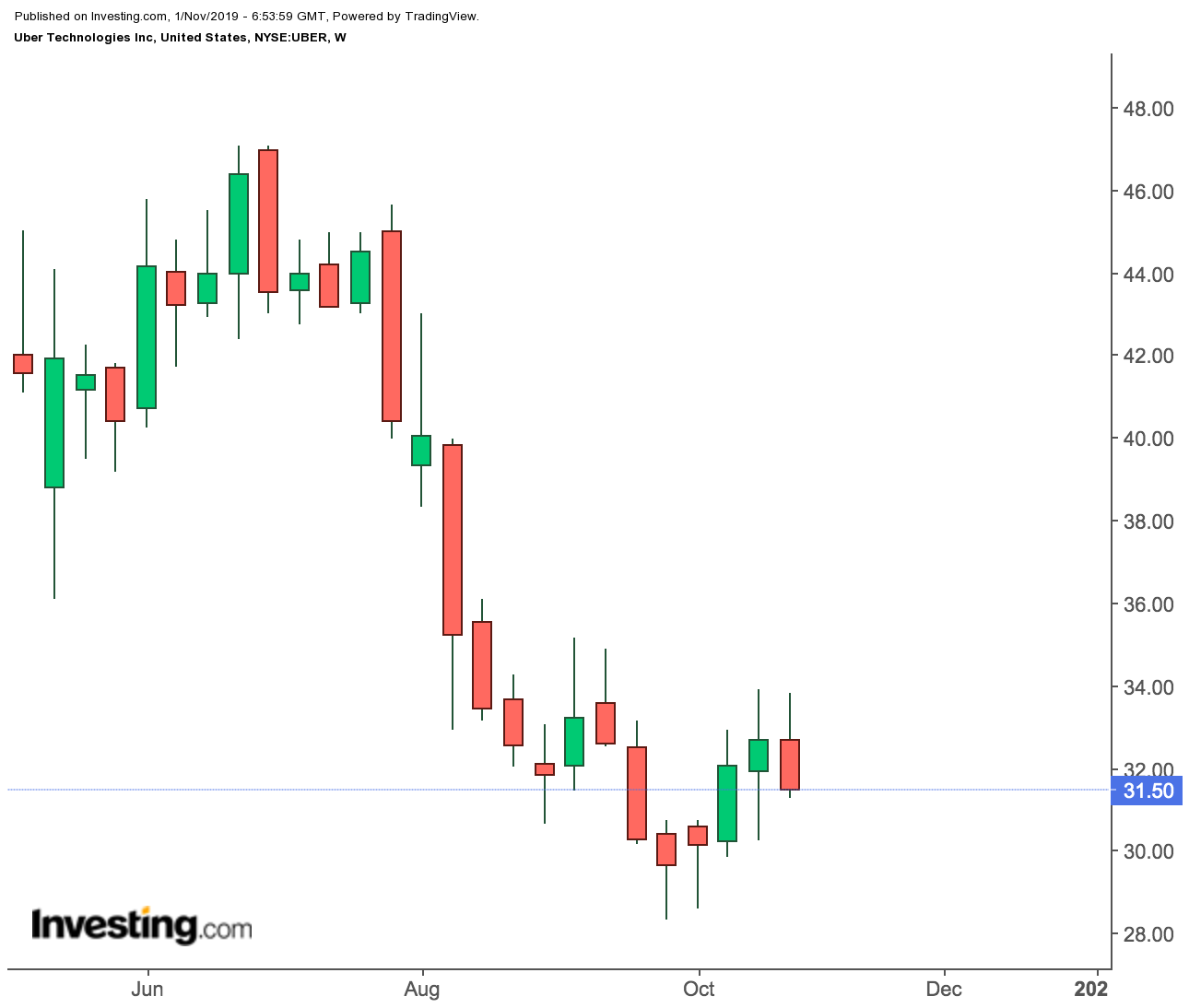* Reports Q3 2019 results on Monday, Nov. 4, after the close
* Revenue expectation: $3.63 billion
* EPS expectation: -$0.7
Investors haven’t shown much faith in the future of the world’s largest ride-hailing company, Uber Technologies Inc (NYSE:UBER). Its shares have been in a downward spiral since its IPO, as the company struggles to show a path to profitability.
And any news of a quick turnaround is unlikely, in our view, when the company reports its third-quarter earnings on Monday after the market close. According to analysts’ consensus forecast, Uber will produce a loss of $0.7 a share on sales of $3.63 billion.
Losses from technology companies that are in a growth phase aren’t surprising. But what’s creating doubts about the San Francisco-based company is the absence of a clearly articulated strategy that could turn this unicorn into a profitable enterprise.
This uncertainty has hurt Uber's stock badly. Since its debut on May 10, its shares have fallen 30%. They tumbled more than 6% yesterday in New York, closing the session at $31.50.

With its earnings report, the company needs to dispel the impression that its core business is slowing. Investors didn’t see that confirmation when Uber reported its second-quarter earnings in August. Adjusted revenue in that period rose 12% from a year earlier, the slowest rate in the company’s history, while total losses widened to over $5 billion.
Uber’s Growing Platform
Despite these setbacks, Uber's Chief Executive Officer Dara Khosrowshahi wants investors to focus on the strength of the company’s evolving “platform,” that he says will one day create the largest modern transportation ecosystem, including its ride-hailing service, its fast-growing food-delivery business — Uber Eats — electric scooters, freight delivery, driverless vehicles and even flying cars.
A latest addition to its expanding portfolio of services is Cornershop, which helps supermarkets, pharmacies and food retailers deliver their goods. That all looks great and perhaps achievable for a tech-driven company that's changed the way people move from one place to another.
The 10-year-old company commands more than 65% of the ride-hailing market in the U.S., Canada, Latin America, Europe, Australia and New Zealand. But that share is becoming tougher to defend when much smaller ride-hailing companies are posing new challenges and increasing competition globally.
For those investors who want to take on some exposure to the ride-hailing business, we find Uber’s biggest rival, Lyft Inc (NASDAQ:LYFT), a much better bet. Unlike Uber, Lyft is focused exclusively on transportation and is getting closer to achieving profitability.
The company beat analysts’ revenue estimates for the third quarter on Wednesday and raised its 2019 forecast, reiterating that it’ll turn a profit by the end of 2021.
Bottom Line
Uber has to quickly find a way to improve its core business and show investors it’s on the right path to eliminate losses and grow its sales. But so far, that seems to a be a long way off.
